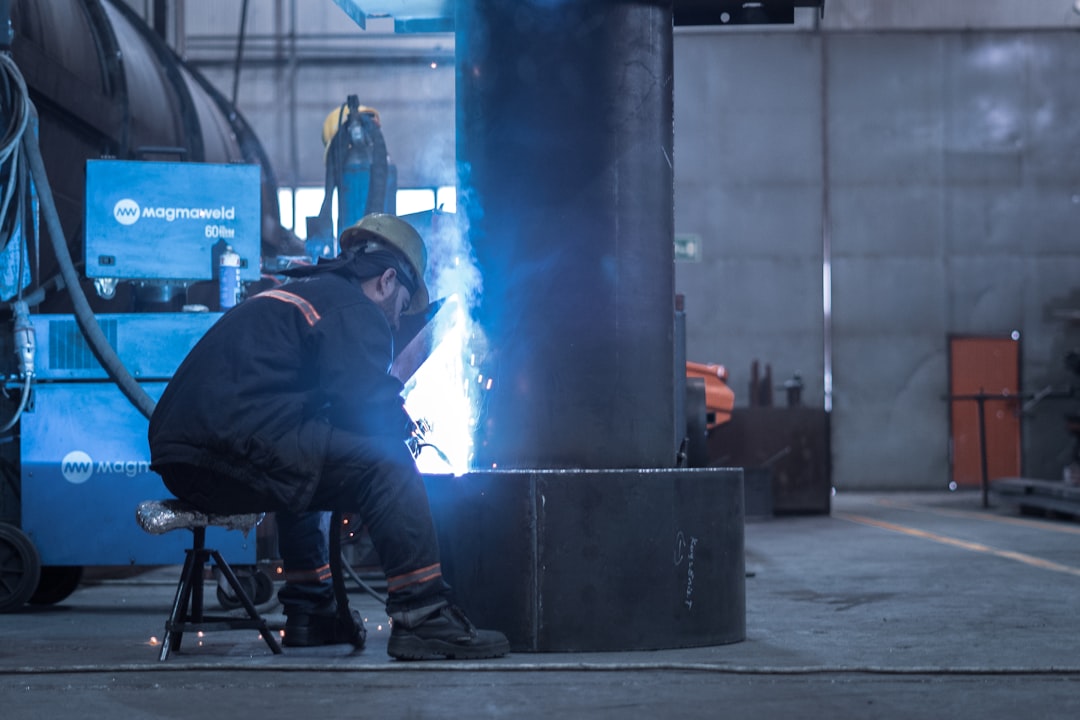The steel manufacturing industry is a powerhouse of global economies, but its inherent processes present significant occupational safety challenges. From the extreme heat of furnaces to the heavy machinery and sharp materials involved, the potential for serious injury or fatality is ever-present. This comprehensive guide explores the crucial aspects of occupational safety in steel manufacturing, providing insights into best practices, regulations, and proactive measures to create a safer working environment.
1. Identifying and Assessing Hazards in Steel Manufacturing
Hazard identification is the cornerstone of any effective safety program. In steel manufacturing, hazards are numerous and varied. They can be broadly categorized into:
- Physical Hazards: These include extreme temperatures (both high and low), noise pollution, vibration, radiation (from welding processes), and ergonomic risks associated with repetitive movements and awkward postures. Specific examples include burns from molten metal, hearing loss from constant loud machinery, and musculoskeletal disorders from repetitive lifting.
- Chemical Hazards: Steel manufacturing involves exposure to various chemicals, including dusts (e.g., silica dust), fumes (e.g., welding fumes), and gases (e.g., carbon monoxide). These can cause respiratory problems, skin irritation, and other health issues. Proper ventilation and respiratory protection are critical.
- Biological Hazards: While less prevalent than physical and chemical hazards, biological hazards can still exist, particularly in areas with poor sanitation or inadequate pest control. Mold, bacteria, and viruses can lead to infections.
- Mechanical Hazards: Heavy machinery, sharp tools, and moving parts pose significant mechanical hazards. Crushing injuries, lacerations, and amputations are potential risks. Regular maintenance, machine guarding, and lockout/tagout procedures are essential.
- Heat-resistant clothing: Protective clothing made from materials that resist high temperatures is essential for workers near furnaces and molten metal.
- Safety footwear: Steel-toe boots are mandatory to protect feet from falling objects and crushing hazards.
- Safety helmets: Hard hats protect workers’ heads from falling objects and impacts.
- Eye and face protection: Safety glasses, goggles, or face shields are crucial to protect eyes from sparks, flying debris, and chemical splashes.
- Hearing protection: Ear plugs or ear muffs are essential in noisy environments to prevent hearing loss.
- Respiratory protection: Respirators are necessary when working with dusts, fumes, or gases to prevent inhalation hazards.
- Gloves: Appropriate gloves are essential to protect hands from cuts, burns, and chemical exposure. Different types of gloves are needed for different tasks.
- Emergency exits and escape routes: Clearly marked and easily accessible emergency exits are essential. Regular drills should be conducted to ensure workers are familiar with escape routes.
- Fire safety measures: Fire extinguishers should be strategically located and readily accessible. Workers should receive training on fire prevention and the proper use of fire extinguishers.
- First aid and medical response: A well-stocked first-aid station and readily available medical personnel are vital. Workers should be trained in basic first aid.
- Emergency communication systems: A reliable communication system is essential to alert workers to emergencies and coordinate response efforts.
- Spill response procedures: Procedures for handling spills of hazardous materials should be in place, including proper containment and cleanup methods.
- Hazard communication: Employers must provide workers with information about the hazards associated with their jobs and the necessary safety precautions.
- Machine guarding: Machines must be properly guarded to prevent injuries from moving parts.
- Lockout/tagout procedures: Procedures for locking out and tagging out energy sources before maintenance or repair work must be followed.
- Personal protective equipment (PPE): Employers must provide workers with appropriate PPE and ensure it is properly used.
- Training and education: Workers must receive adequate training on safety procedures and the hazards associated with their jobs.
- Record-keeping: Detailed records of accidents, injuries, and safety inspections must be maintained.
- Proactive safety management: Implementing a proactive approach to safety, focusing on preventing accidents rather than just reacting to them.
- Worker participation: Encouraging workers to actively participate in safety programs and report hazards.
- Regular safety training: Providing regular and ongoing safety training to workers.
- Safety audits and inspections: Conducting regular safety audits and inspections to identify potential hazards and areas for improvement.
- Incident investigation: Thoroughly investigating all accidents and near misses to identify root causes and prevent future incidents.
- Performance measurement: Tracking key safety metrics to monitor progress and identify areas for improvement.
A thorough risk assessment, involving identifying the likelihood and severity of each hazard, is crucial for prioritizing safety interventions and developing effective control measures.
2. Personal Protective Equipment (PPE) in Steel Mills
Personal Protective Equipment (PPE) plays a vital role in mitigating the risks associated with steel manufacturing. The specific PPE required will vary depending on the task, but generally includes:
Regular inspection and maintenance of PPE are critical to ensure its effectiveness. Workers must be properly trained on the correct use and limitations of their PPE.
3. Emergency Procedures and Response in Steel Manufacturing
Having well-defined emergency procedures and a robust response system is crucial in a high-risk environment like a steel mill. This includes:
Regular emergency drills and training are essential to ensure workers are prepared to respond effectively in the event of an emergency.
4. Regulatory Compliance and Legal Aspects of Steel Manufacturing Safety
Steel manufacturers must adhere to a wide range of safety regulations and legal requirements, which vary depending on the location. These regulations typically cover aspects such as:
Non-compliance with these regulations can result in significant penalties, including fines and legal action. Regular safety audits and inspections are essential to ensure ongoing compliance.
5. Continuous Improvement and Safety Culture in Steel Manufacturing
Maintaining a strong safety culture is crucial for long-term success in steel manufacturing. This involves:
A strong safety culture, where safety is a core value and everyone takes responsibility for their own safety and the safety of others, is essential for creating a safe and productive work environment.
By implementing these measures and fostering a strong safety culture, steel manufacturers can significantly reduce the risk of workplace accidents and injuries, creating a safer and more productive environment for their employees.
Tags: steel manufacturing safety, occupational safety, steel mill safety, workplace safety, industrial safety




